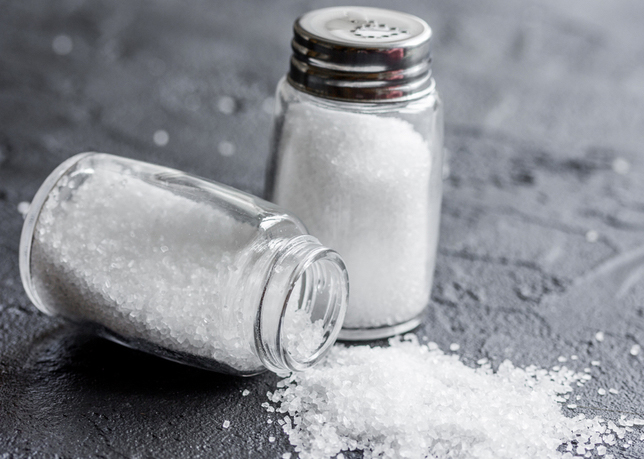
It’s found in nearly everything you eat, but do you know how much sodium is too much? What can you do to balance your nutrition to avoid excess sodium while still enjoying your meals? Better known as “salt”, sodium is lurking in your favorite foods. If you think sodium is nothing more than table salt that you add to your dinner, you’re missing half the battle. Fortunately, FitClub has the information you need to keep your sodium down and your lifestyle healthy.
 1. How much sodium is healthy? Unlike other additives to food, you can’t eliminate sodium because your body needs sodium to function. Sodium is often added to food to improve flavor but too much sodium may lead to heart disease, dangerously high blood pressure and an increased risk of having a stroke. The Center for Disease Control recommends no more than 2,300 milligrams of sodium per day for a healthy lifestyle. That may sound like a lot, but ninety percent of Americans consume closer to 3,400 milligrams or more each day.
1. How much sodium is healthy? Unlike other additives to food, you can’t eliminate sodium because your body needs sodium to function. Sodium is often added to food to improve flavor but too much sodium may lead to heart disease, dangerously high blood pressure and an increased risk of having a stroke. The Center for Disease Control recommends no more than 2,300 milligrams of sodium per day for a healthy lifestyle. That may sound like a lot, but ninety percent of Americans consume closer to 3,400 milligrams or more each day.
2. Why do we over consume sodium? Sodium occurs naturally in some foods, but processed foods and most foods from restaurants are extremely high in sodium. Reducing the amount of table salt you add to your meals is a healthy start. Unfortunately, sodium may lurk in foods you would least expect. As a general rule, if it’s packaged or processed, it’s likely high in sodium. Processed foods like canned soup, pudding, cottage cheese may not taste salty to you, but they are notoriously high in sodium. The same is true for the otherwise healthy vegetable juice you may drink in the mornings or the dressing you add to a healthy salad. Processed lunch meat, pizza, and even sauces that you add to your favorite foods (i.e. soy sauce (1,024 mg per tablespoon) and barbeque sauce (395 mg per 2 tablespoons) are also likely driving up your sodium intake without you even knowing it’s happening.
3. You can reduce your sodium intake without compromising taste. Whenever possible, opt for fresh fruits and vegetables which are much lower in sodium than their canned counterparts. When you do have to buy food with a label, be sure to read the label and take into account how much sodium is actually in your favorite foods. Calorie apps on your phone may also help you stay on top of how much sodium you’re consuming in any given food and when you see it in black and white, you may be more convinced that you are consuming too much sodium.
Do you limit your sodium intake? Share your tips for preserving flavor without added sodium with your fellow FitClub members!